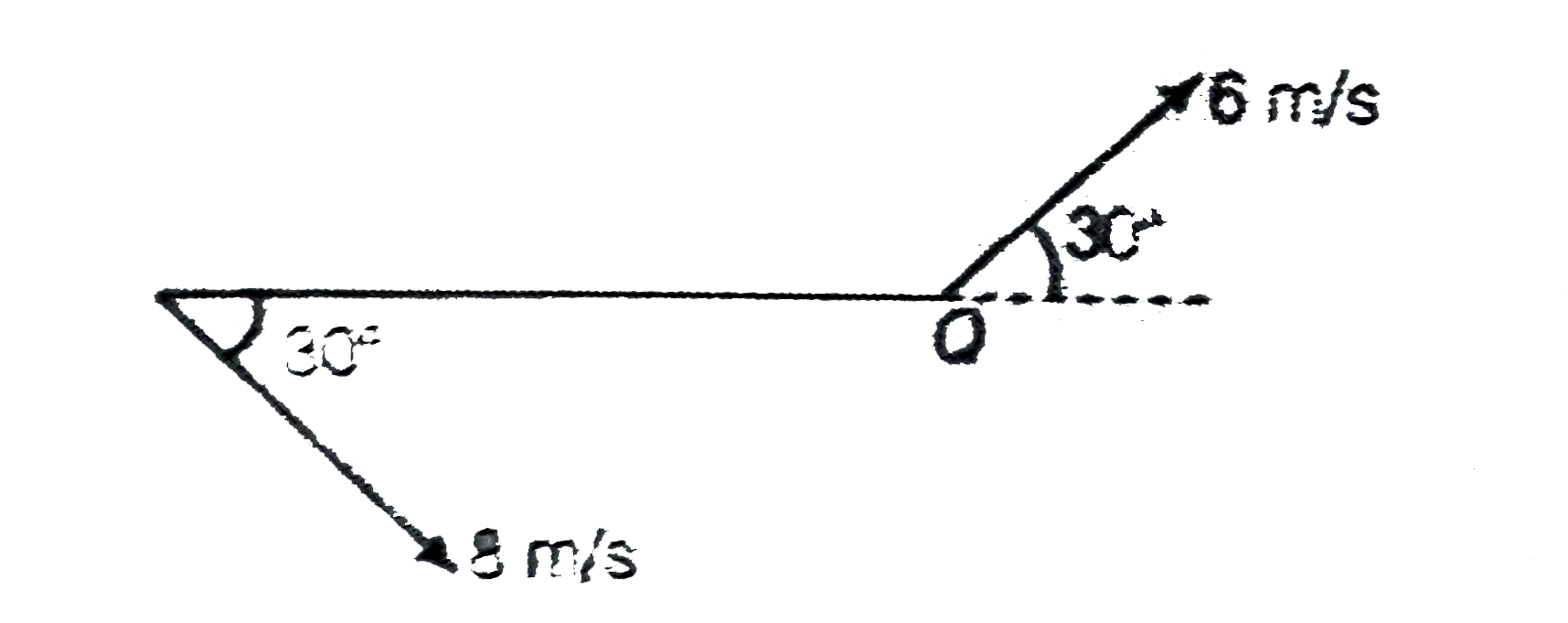A force F = 2.0 N acts on a particle P in the xz-plane. The force F is parallel to x-axis. The particle P (as shown in the figure) is at a distance 3 m and the line joining P with the origin makes angle 30∘ with the x-axis. The magnitude of torque on P with respect to origin O (in N m) is

2
3
4
5
The correct Answer is:B
Torque , →τ=→r×→F
In magnitude , τ=rFsinθwhere θ is the angle between →r and →F
Here F = 2 . 0 N , r= 3 m , θ=30∘
∴ The magnitude of torque on P with respect to origin O is
τ=(3m)(2,0N)sin30∘=(3m)(2.0N)(12)=3Nm

Topper's Solved these Questions
- MOTION OF SYSTEM OF PARTICLES AND RIGID BODY BOOK - MTG GUIDECHAPTER - MOTION OF SYSTEM OF PARTICLES AND RIGID BODY EXERCISE - CHECK YOUR NEET VITALS
14 Videos
- MOTION OF SYSTEM OF PARTICLES AND RIGID BODY BOOK - MTG GUIDECHAPTER - MOTION OF SYSTEM OF PARTICLES AND RIGID BODY EXERCISE - AIPMT / NEET (MCQs)
37 Videos
- MOTION OF SYSTEM OF PARTICLES AND RIGID BODY BOOK - MTG GUIDECHAPTER - MOTION OF SYSTEM OF PARTICLES AND RIGID BODY EXERCISE - AIPMT / NEET (MCQs)
37 Videos
- LAWS OF MOTIONBOOK - MTG GUIDECHAPTER - LAWS OF MOTIONEXERCISE - AIPMT /NEET (MCQ)
24 Videos
- OSCILLATIONS AND WAVES BOOK - MTG GUIDECHAPTER - OSCILLATIONS AND WAVES EXERCISE - AIPMT / NEET MCQs
43 Videos
Similar Questions
Knowledge Check

A particle mass parallel to x-axis with constant velocity v as shown in the figure. The angular velocity of the particle about the origin OAremains constantBcontinuously increasesCcontinuously decreasesDoscillates.If a line OP of length r (where, O is the origin) makes an angle α with X-axis and lies in the XZ-plane , then what are the coordinates of P?
A(rcosα,0,rsinα)B(0,0,rsinα)C(rcosα,0,0)D(0,0,rcosα)Two moving particles P and Q are 10 m apart at a certain instatn. The velocity of P is 8 m/sm making an angle of 30∘ with the line joining P abd Q and that of Q is 6m/s making an angle 30∘ with PQ as shwon in figure.

Then, angular velocity of P wiht respect to Q isAzeroB0.1rad/sC0.4rad/sD0.7rad/s
A single force acts on a particle situated on the negative x-axis. The torque about the origin is in the positive z-direction. The force is
View SolutionA single force acts on a particle situated on the negative x-axis. The torque about the origin is in the positive z-direction. The force is
View SolutionA force f=10+2x acts on a particle moving in straight line on x axis the work done by this force during a displacement from x=0 and x=3m
View SolutionTwo moving particles P and Q are 10 m apart at a certain instant. The velocity of P is 8 m/s making 30º with the line joining P and Q and that of Q is 6 m/s making an angle 30º with PQ as shown in the firuge .Then angular velocity of P with respect to Q is-

View SolutionA force f=10+2x acts on a particle moving in straight line on x axis the work done by this force during a displacement from x=0 and x=3m
View Solution
